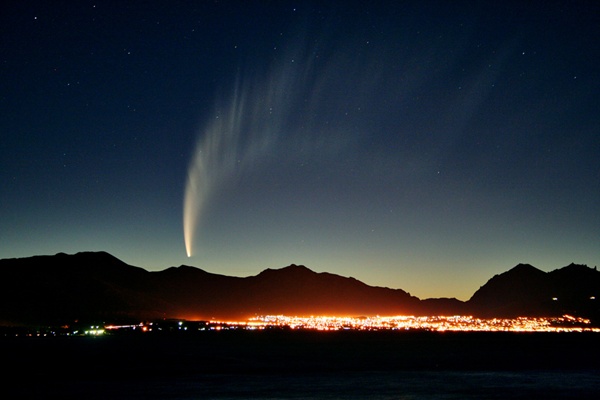

1.) If all of the asteroids were combined into a ball, they would still be much smaller than Earth’s moon. If the sun was as tall as a typical front door, Earth would be the size of a nickel, the moon would be about as big as a green pea and Ceres (the largest object in the main asteroid belt) would be as small as a sesame seed.
2.) There are more than 150 asteroids that are known to have a moon (some even have two moons!). The first discovery of an asteroid-moon system was asteroid Ida and its moon Dactyl in 1993.
3.) Asteroids can have ring systems (though they aren’t quite as glorious as Saturn’s). One asteroid, named Chariklo, is known to have two dense and narrow rings.
4.) More than 10 spacecraft have explored asteroids, and we have even landed on an asteroid (NEAR Shoemaker landed on an Eros).
5.) Ceres, is both the first and largest asteroid to be discovered (in 1801 by Giuseppe Piazzi); it is the closest dwarf planet to the sun and it encompasses over one-third of the estimated total mass of all the asteroids in the asteroid belt.
WATCH: Comet Hits the Sun

6.) Due to solar wind, comets tails point away from the Sun, regardless of the direction in which the comet is traveling.
7.) If the sun were as tall as a typical front door, Earth would be the size of a nickel, dwarf planet Pluto would be the size of a head of a pin and the largest Kuiper Belt comet (about 100 km across, which is about one twentieth the size of Pluto) would only be about the size of a grain of dust.
8.) A comet warms up as it nears the sun. As a result, it develops an atmosphere, or coma. The coma may be hundreds of thousands of kilometers/miles in diameter, and the trail of gas and dust that a comet leaves behind may be millions of km/miles long.
9.) Comets may not be able to support life themselves, but they may have brought water and organic compounds—the building blocks of life—to our planet through collisions with Earth and other bodies in our solar system.
10.) As of 2010, scientists have discovered about 4,000 comets, and evidence suggests there may be hundreds of millions more—perhaps even trillions.
Facts via NASA
Comets Throughout History:
- 1070-1080: The comet later designated Halley’s Comet is pictured in the Bayeux Tapestry, a chronicle of the Battle of Hastings of 1066.
- 1449-1450: Astronomers make one of the first known efforts to record the paths of comets across the night sky.
- 1705: Edmond Halley publishes that the comets of 1531, 1607, and 1682 are the same object and predicts its return in 1758. The comet arrives on schedule and is later named Halley’s Comet.
- 1986: An international fleet of five spacecraft converges on comet Halley as it makes its regular (about every 76 years) pass through the inner solar system.
- 1994: In the first observed planetary impact by a comet, awed scientists watch as fragments of comet Shoemaker-Levy 9 smash into Jupiter’s atmosphere.